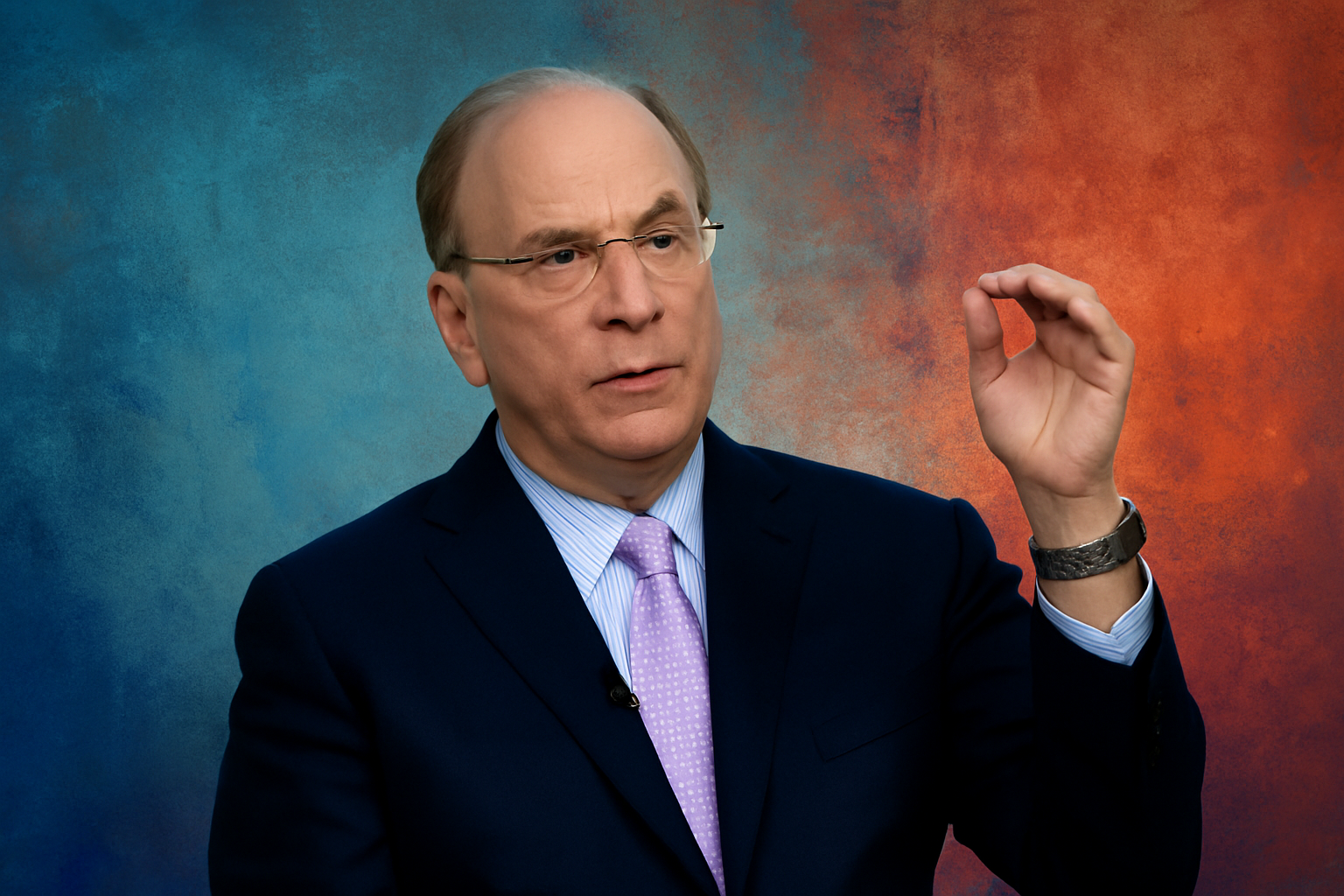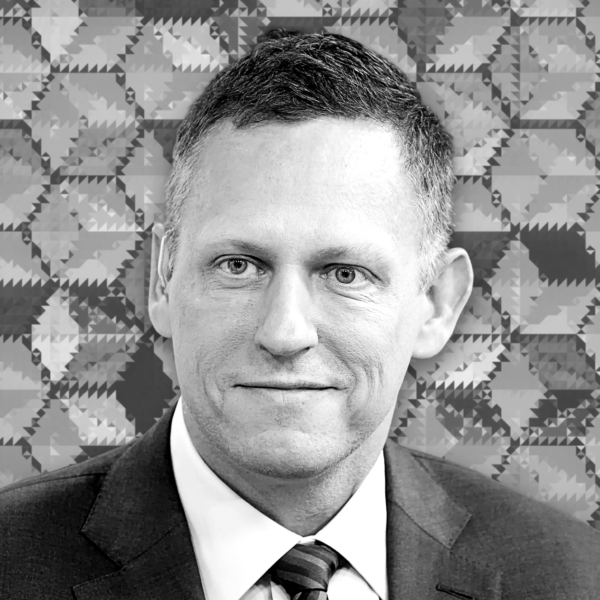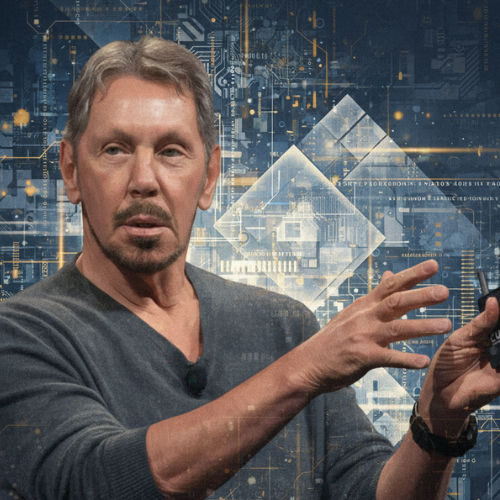
Larry Fink and what family offices can learn from BlackRock
Laurence D. Fink, the co-founder, chairman, and CEO of BlackRock, is a well-known figure in global finance. He leads the world’s largest asset management firm, with over $11.6 trillion in Assets Under Management (AUM). His visionary leadership has positioned BlackRock at the forefront of shaping the future of capital markets. Since founding BlackRock in 1988, Fink has frequently advised governments and global leaders on economic stability. That makes him the most influential voice in the evolving financial landscape. Interestingly, his remarkable success story began with a significant setback: a $100 million loss as a trader on Wall Street. This case study explores Larry Fink and BlackRock’s journey, revealing key lessons that family offices can implement for their own success.

BlackRock, Inc., founded in 1988, is the world’s largest asset manager, headquartered in New York City, with $11.5 trillion in assets under management as of 2024. Operating in 30 countries with 70 offices, it serves institutional and retail clients, offering investment, advisory, and risk management services. BlackRock manages the iShares ETF group and provides technology through its Aladdin platform.
About the Company
BlackRock
- Location New York, United States
- Type Public (Asset Management)
- Founded 1988
- Services Investment management, risk management, advisory services, ETFs (iShares), Aladdin platform
Larry’s background
Born in 1952 in Van Nuys, California, Laurence D Fink grew up in a Jewish middle-class neighbourhood in Los Angeles’ San Fernando Valley. One of three children, his father owned a shoe store, and his mother was an English professor at California State University. Larry Fink went to a High School in Van Nuys, California, where he met his high school sweet heart and now wife Lorie Weider.
In 1974, he earned a Bachelor of Arts in Political Science from the University of California, Los Angeles (UCLA). And married Lori in the same year. He later pursued a Master of Business Administration (MBA) with a concentration in real estate from UCLA’s Graduate School of Business, graduating in 1976. Soon after graduating, he joined The First Boston Corporation, a New York-based investment bank.
The big loss
At First Boston, he worked as one of the bank’s first traders of mortgage-backed securities (MBS), a relatively new financial instrument at the time. Rising quickly through the ranks, he became one of the youngest managing directors on Wall Street.
The 80s were the burgeoning of the now-infamous mortgage-backed securities (MBS) in the US. And Mr Fink, an overperformer, added over $1 billion to First Boston’s bottom line trading MBS. However, in 1986, the unthinkable happened. One of his departments suffered a $100 million loss due to an incorrect prediction about interest rates, impacting the value of the firm’s MBS portfolio. This loss not only hurt First Boston’s profits but also took a toll on Fink’s reputation. By 1988, he had to leave his position because, as he put it, he “did not have the option to stay.” This setback marked a turning point for him, leading to an obsession with risk management and ultimately the founding of BlackRock Inc.
Building BlackRock
In 1988, Larry Fink and a group of friends founded BlackRock as partners. The company first formalised as Blackstone Financial Management under The Blackstone Group, a rising private equity firm co-founded by Stephen Schwarzman and Peter Peterson. Fink and partners offered fixed-income investments, using technology for risk management and providing transparency and control.
Starting from scratch, Blackstone provided a $5 million credit line to get it off the ground. Four years later, the company had amassed $17 billion AUM, and CEO Larry Fink began to seek independence from The Blackstone Group. Citing differences in vision, with a sprinkle of Wall Street drama, they separated through a management buyout that started in 1992. Blackstone retained a minority stake until 1994, when the firm fully separated, adopting the name ‘BlackRock’ as homage to their founding backers.
Becoming a behemoth
Free to pursue their vision, BlackRock CEO Larry Fink and team tripled down on their technology systems, which helped them manage their business more efficiently. But it wasn’t until 1999, when BlackRock Inc. officially went public on the NYSE, that they formalised their tech and named it the Aladdin platform, which stands for Asset, Liability, Debt, and Derivative Investment Network. Of course, IPOing boosted their AUM to an impressive $165 billion by the end of that year.
Fast-forward to 2006, before the great financial crisis. A tech-savvy BlackRock acquired Merrill Lynch Investment Managers. The deal diversified the company’s investment strategy beyond fixed income into equities, mutual funds, and global markets, boosting BlackRock’s AUM to $1.1 trillion.
By the time the 2008 financial crisis hit, BlackRock was one of the world’s largest asset managers. And Fink and BlackRock were called upon by the U.S. government and central banks to manage distressed assets, including Bear Stearns and AIG, enhancing the company’s reputation. The following year, BlackRock acquired Barclays Global Investors, including its iShares ETF business. The acquisition tripled BlackRock’s AUM to $3.3 trillion by the end of 2009, with iShares making BlackRock the global leader in the fast-growing ETF market.
In 2020, the company focused on sustainability, responding to investor demand, and its resilience during the pandemic reinforced its risk management prowess. In 2023, BlackRock acquired Global Infrastructure Partners, expanding into alternative investments like infrastructure. In the same year, they also launched spot Bitcoin and Ether ETFs, entering the digital assets market. The company continued to expand into alternatives and digital assets while maintaining leadership in ETFs and global markets. As of today, BlackRock’s AUM has surpassed $11.6 trillion, cementing its position as the world’s largest asset manager.
The Simple takeaway
Condensing three decades of BlackRock’s success into three bullet points is no easy feat. Nevertheless, below are key lessons that family offices can take away:
Embrace Technology
In a conversation about BlackRock’s success over the past thirty years, Mr. Fink credited their technology system. As he put it, “We would not even be who we are today if it weren’t for the technology.” Central to BlackRock’s operations is the Aladdin platform, which serves as a unified system for all of the company’s business functions. It’s impressive that all 21,000 employees, spread over 30 countries, use the same platform to work together.
Family offices can explore implementing similar software solutions to help streamline their own operations, improve communication, make data-driven decisions, and enhance overall efficiency.
Diversify Strategically
Since its breakaway from Blackstone, BlackRock’s journey has been a masterclass in strategic diversification. From a fixed-income specialist to a diversified asset manager, the company’s expansion into global markets, equities and alternative assets demonstrates how strategic expansion can bode well in the long run.
Family offices can emulate this by diversifying thoughtfully across asset classes, regions, and themes. While scale differs, the principles to preserve and grow wealth over time remain the same.
Leverage networks
Larry Fink’s prominent media presence since the 2008 crisis, including keynote speeches and news appearances resulting from his advisory role to governments and central banks, has significantly elevated BlackRock’s global standing. Furthermore, his annual letters to investors now heavily influence financial news and shape opinions throughout the financial sector. This increased visibility has fostered public trust and created more opportunities for the company.
While many family offices prioritise privacy, strategically building networks can unlock exclusive opportunities. For instance, participating in specialised family office networks, joining relevant industry associations, or attending select investment conferences can provide valuable connections and insights. By emulating BlackRock’s approach to strategic visibility and networking, family offices can potentially attract more opportunities and enhance their long-term success.
Further Reading

Peter Thiel’s capital stack: A contrarian view for family offices
InvestmentsPeter Thiel is one of Silicon Valley’s most influential and polarising figures. A billionaire investor, PayPal co-founder, and early Facebook backer, he is also the driving force behind Palantir and Founders Fund. Known for his contrarian worldview and libertarian ideology, Thiel has built a layered approach to managing his wealth. His method blends operating companies, […]

From fragmentation to focus: A $200M portfolio transformation
Technology StacksA UK-based multi-generational single-family office managing over $200 million faced challenges managing its complex portfolio spread across multiple continents and assets. As their sophisticated investments exceeded the limits of their operational infrastructure, they partnered with IQ-EQ to develop a tailored solution. This case study outlines how IQ-EQ helped them shift from a reactive to a […]

The hidden drains on family office portfolios and how to stop them
Listed Stocks & BondsWhen Greenlock started working with funds, a single-family office client asked them to audit their structure. At first, everything looked standard — until they stumbled upon a curious share class. The minimum investment was just $10k, designed for plain-vanilla retail investors with the highest regulatory protection and enormous embedded retrocessions. Clearly, it was not a […]

Larry Ellison: The unconventional billionaire and his family office
LeadershipLawrence Joseph Ellison is one of the world’s most enigmatic billionaires. As a two-time college dropout and a personal friend of the late Steve Jobs and Elon Musk, he has built a reputation for his bold, unconventional approaches to business and lifestyle. As the founder and former CEO of Oracle Corporation, he has chartered a […]